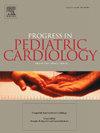Electrolyte imbalance in pediatric patients following cardiac surgery with CPB: Experience from a single institution in Afghanistan
IF 0.6
Q4 PEDIATRICS
引用次数: 0
Abstract
Background
Open cardiac surgery with cardiopulmonary bypass (CPB) contributes to postoperative electrolyte imbalances, which increases the risk of complications like arrhythmias. These imbalances stem from fluid shifts, hemodilution, acid-base disturbances, and factors such as cardioplegic solutions, hypothermia, elevated catecholamine levels, and antidiuretic hormone release, as well as non-pulsatile blood flow. Early monitoring and targeted prevention are crucial to managing these risks and improving postoperative outcomes.
Objective
This study aimed to investigate the prevalence of electrolyte imbalances in pediatric patients undergoing cardiac surgery while considering potential influencing factors such as age, gender, body mass index (BMI), type of cardiac surgery, and cardiopulmonary bypass (CPB) duration.
Materials and methods
A retrospective cross-sectional study was conducted at the French Medical Institute for Mothers and Children in Kabul, Afghanistan, from January 1, 2021, to September 30, 2023. A total of 393 pediatric patients aged 0–18 years undergoing open cardiac surgery were included, excluding those with closed cardiac surgery, incomplete data, chronic renal disease, or gastrointestinal disorders. Data collected included patient demographics, surgery type (cyanotic vs. acyanotic), primary diagnoses (e.g., ASD, VSD, TOF), RBC transfusion amounts, CPB duration, and electrolyte levels measured before surgery, immediately after surgery, and on the first and second postoperative days. Data were analyzed using SPSS version 22, employing descriptive statistics and various statistical tests (Kolmogorov-Smirnov, Wilcoxon signed rank, Kruskal-Wallis, binomial regression, Spearman correlation), with significance set at p < 0.05.
Results
Participants ranged from 0 to 18 years, with a mean age of 5.8 years (SD = 4.10), and 55.5 % (n = 218) were male. Most patients (93.4 %, n = 367) were classified as underweight, with a mean body mass index (BMI) of 15.8 kg/m2 (SD = 2.31). VSD closure was performed in 41.3 % (n = 162) of cases, and 76 % (n = 299) had a bypass duration exceeding 60 min. Electrolyte imbalances were common among the patients: hyponatremia occurred in 18.6 % (n = 72) preoperatively, rising to 60.3 % (n = 199) by the second postoperative day. Hypokalemia increased from 6.9 % (n = 27) preoperatively to 64 % (n = 251) post-surgery, while hypocalcemia was noted in 31 % (n = 122) on the first postoperative day. Sodium levels rose significantly after packed cell transfusions (p < 0.001), and magnesium levels increased in toddlers and adolescents (p < 0.001). Notably, postoperative potassium levels were 0.6 times lower in females compared to males (p = 0.026), and patients undergoing surgery for over 2 h had 2.6 times higher odds of sodium imbalances (p < 0.001).
Conclusion
Pediatric patients undergoing cardiac surgery are at high risk for electrolyte disorders, particularly hypokalemia and hyponatremia, which can lead to serious complications. Key predictors include the type of surgical procedure, cardiac lesions, and factors such as age, gender, body mass index (BMI), and cardiopulmonary bypass (CPB) duration. While fluid management and diuretics are important considerations, careful monitoring and prompt correction of electrolyte levels are essential to prevent postoperative complications and improve outcomes.
求助全文
约1分钟内获得全文
求助全文
来源期刊

PROGRESS IN PEDIATRIC CARDIOLOGY
PEDIATRICS-
CiteScore
0.90
自引率
11.10%
发文量
69
审稿时长
75 days
期刊介绍:
Progress in Pediatric Cardiology is an international journal of review presenting information and experienced opinion of importance in the understanding and management of cardiovascular diseases in children. Each issue is prepared by one or more Guest Editors and reviews a single subject, allowing for comprehensive presentations of complex, multifaceted or rapidly changing topics of clinical and investigative interest.
 求助内容:
求助内容: 应助结果提醒方式:
应助结果提醒方式:


